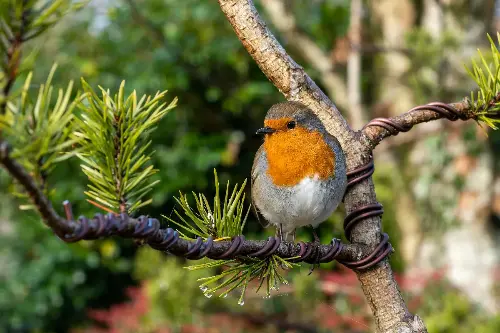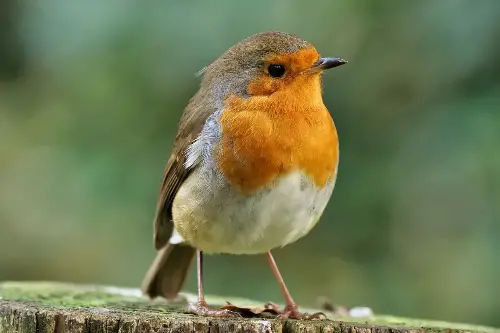In the tapestry of British wildlife, one diminutive creature stands out not just for its charming appearance but also for its cultural significance. The Robin Redbreast, as it is affectionately known, has a special place in the hearts of people across Great Britain, embodying a spirit of resilience and cheer throughout the year. What makes the robin such an endearing symbol, you might wonder? Let's delve into the fascinating qualities of this feathered icon.

One of the most striking features of the robin is its vibrant orange-red chest—an instantly recognisable trait that shines like a beacon in the garden. This beautiful plumage is not just for show, though; it plays a pivotal role in the robin’s territorial behaviour, signalling to potential rivals that they are encroaching on someone else's turf. Interestingly, Robin's feathers are not inherently red but appear so due to the complex nanostructures that reflect light in a certain way, giving us the illusion of colour.
Beyond their beautiful chests, robins are notable for their melodious song. These birds are among the few in the UK that sing year-round, their lilting tunes a constant background note in British gardens and woodlands. Even in the depths of winter, a robin’s song can be heard, as they are fiercely territorial birds that sing to defend their patch. This has earned them the mantle of the Christmas bird, further cementing their place in British lore and custom.
Robins are also known for their inquisitive and bold nature. Unlike many wild birds that keep their distance from humans, robins seem to exhibit less fear and often approach people closely, sometimes even taking food from outstretched hands. This behaviour has endeared them to many nature lovers and has led to a widespread association of robins with friendliness and trust. It is partly this fearlessness that has made robins a common sight in British gardens, where they often follow gardeners around, waiting for the soil to be turned over to reveal tasty insects and worms—a behaviour that earned them the moniker 'gardener's friend'.
Another interesting fact about Robins is their wide distribution across various habitats. They can adapt to both rural and urban environments, making them one of the most widespread and easily seen wild birds in Britain. From forests and hedgerows to parks and backyards, robins make their presence known, further contributing to their revered status as a national symbol.

Robins have a unique place in British folklore, too. A popular legend suggests that the robin got its red chest from being scorched by fire while bringing water to souls in purgatory. Additionally, in Victorian times, postmen wore red tunics and were nicknamed "robins." The association between the bird and the postmen possibly added to the custom of depicting robins on Christmas cards—a practice that continues to this day.
Breeding season brings out yet another fascinating aspect of robin behavior. Males and females are similar in appearance, which is unusual since in many bird species, the males have more distinct and vibrant coloring. During this time, the male robin will sing even more frequently to attract a mate and to repel other males. Both parents are involved in raising the young, which further endears them to onlookers, as a family of robins can often be observed working together to nurture their chicks.
Science also offers us a deeper understanding of these creatures. Recent studies into the cognition of robins have shown that they possess a remarkable ability to remember the locations of hundreds of food caches, a testament to their intelligence and adaptability. Their innate capacity to navigate landscapes and adapt to changing conditions is another testament to their resilience.
Yet, despite their robustness, robins are not immune to the challenges posed by a changing environment. Habitat loss, climate change, and human activity can affect their numbers and distribution. Conservation efforts continue to play a crucial role in ensuring that this beloved bird remains a common sight across the British Isles.
In closing, the robin redbreast is more than just a bird; it is a symbol of joy, a beacon of the changing seasons, and a companion to those who appreciate the wonders of the natural world. It stands as a testament to adaptability and tenacity, as well as a reminder that even the smallest creatures can have an impact on cultural identity and heritage. So, the next time you spot a robin, take a moment to appreciate the kaleidoscope of qualities that this charming bird represents, a truly fitting emblem for Great Britain.
